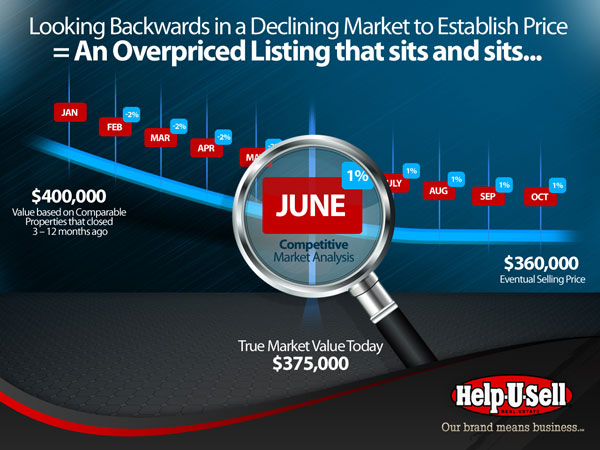If you are a Help-U-Sell broker, you want to generate leads. Mostly you want to generate seller leads, but buyer leads are ok too. You read and you hear about online marketing and lead generation and it sounds wonderful! You want onboard! And you wonder how!
I’ve been working on this for awhile and I have seen some great successes. I’ve also seen some failures. I think we get into trouble with online marketing for two reasons: lack of budget and not doing the groundwork first. You see, that marketing that we did before the Internet matured into a viable marketing vehicle – the mailers and postcards and CIs and Arounds and signs signs signs – didn’t go away. They are still vital. Online marketing, though essential today, is in addition to those other things we all used to do before the downturn. As people leap to online marketing, I see them abandoning that real, tangible, local marketing – what I call Analog marketing – and that’s a mistake.
Analog marketing has to do with being physically visible in the target market. A well located office with great signage is essential Analog marketing. A billboard is Analog marketing, An EDDM delivered to 5,000 households is Analog marketing. A car wrap is Analog marketing. Regular and planned contact with your CIs is Analog marketing. Sending postcards to 100 neighbors around a new Coldwell Banker listing is Analog marketing. Having lots of For Sale and Directional signs out is Analog marketing.
And Analog marketing is the first step. It should be in place before taking on an online, or Digital marketing program.
Listen: I love my digital life. I love the fact that I can hold a device in my hand that makes a Star Trek communicator look old fashioned, that beams a signal into space and beams it back so that I can be instantly connected with anyone on the planet. I love that, without even pushing buttons, by simply speaking to Google, I can access the sum total of human knowledge, to learn new things, figure stuff out and get answers on the fly. I love that we have an inexpensive electronic marketing mega-tool that enables us to be in front of consumers in our local marketplaces and across the country.
But unless you have done the Analog steps of becoming visible in the local market, your attempts at Digital marketing will be less effective.
So, part one of lead generation is . . . back to basics.
It is doing a comprehensive Market Analysis – really doing it – looking at today’s real turnover rates around the area and choosing your target market(s) from those neighborhoods with highest turnover.
It is setting up systems that happen automatically every day in the office: the EDDM that goes out every month or six weeks, Brag Cards and Arounds, regular contact with CIs, budgeting for a car wrap and maybe a billboard.
It is creating a budget for all of this Analog marketing that is treated like your office rent: you’ll plan to have the expense no matter what’s going on in your business (because marketing is what drives your business).
Once that blanket of Analog visibility is laid down and functioning in the marketplace, it will be time to add in the Digital.
By the way, here are some metrics to guide you in setting up the Analog portion of your marketing program:
- You want a Target Market of between 12,000 and 20,000 households. The size will be determined by turnover rates (lower = more households) and your budget.
- You should look for neighborhoods where Turnover rates are 4% per year or higher. Anything under 3% per year can be a problem.
- Your total marketing budget (Analog and Digital) should be between 7% and 10% of your anticipated annual Gross Commission Income. If you plan to Gross $250,000, you should be spending between $1,500 and $2,000 per month.
- Roughly ⅔ of your marketing budget should be Analog, devoted to being physically visible in your target market(s). ⅓ should be devoted to Digital marketing. It costs less, so you spend less.
Next up: What is Digital marketing? And how to go about making it work for you.


